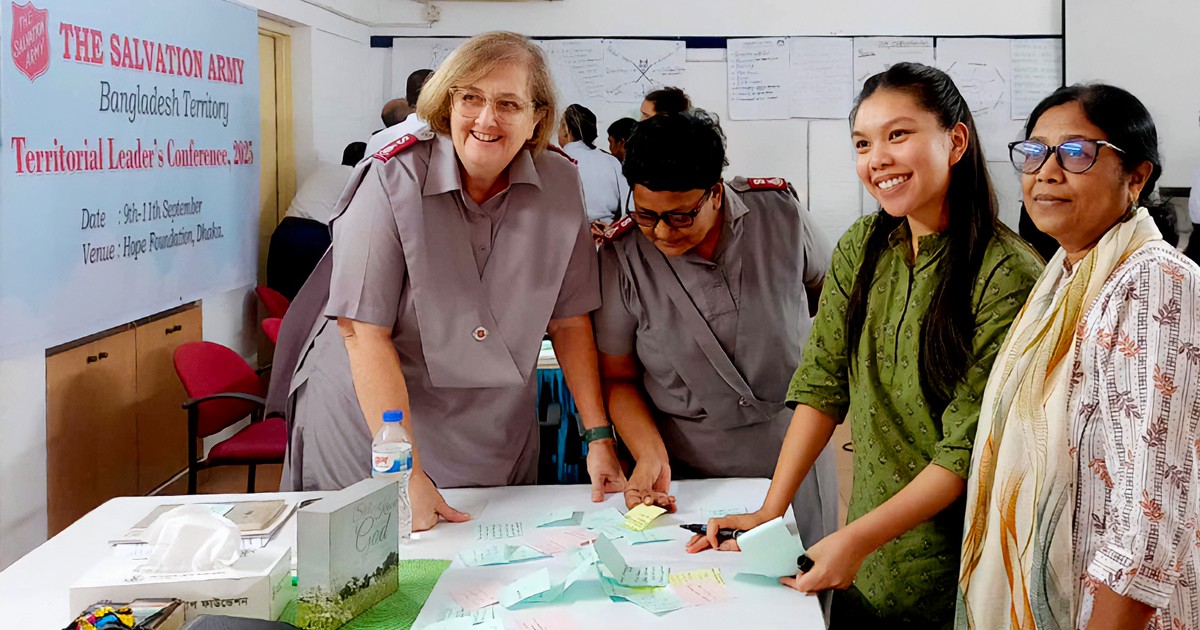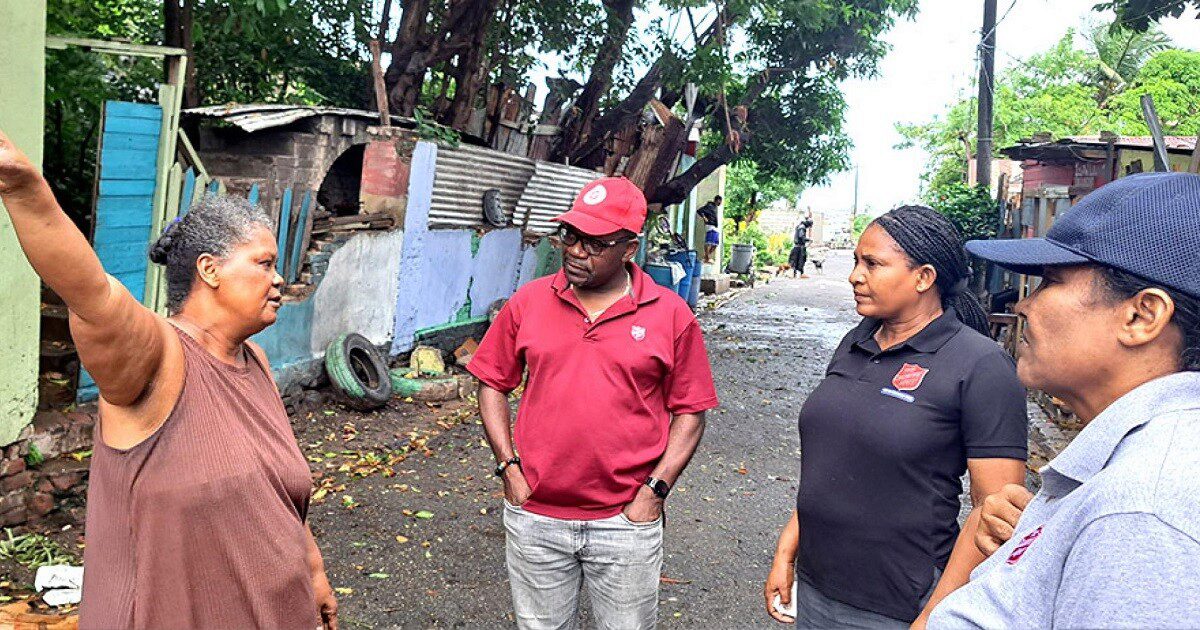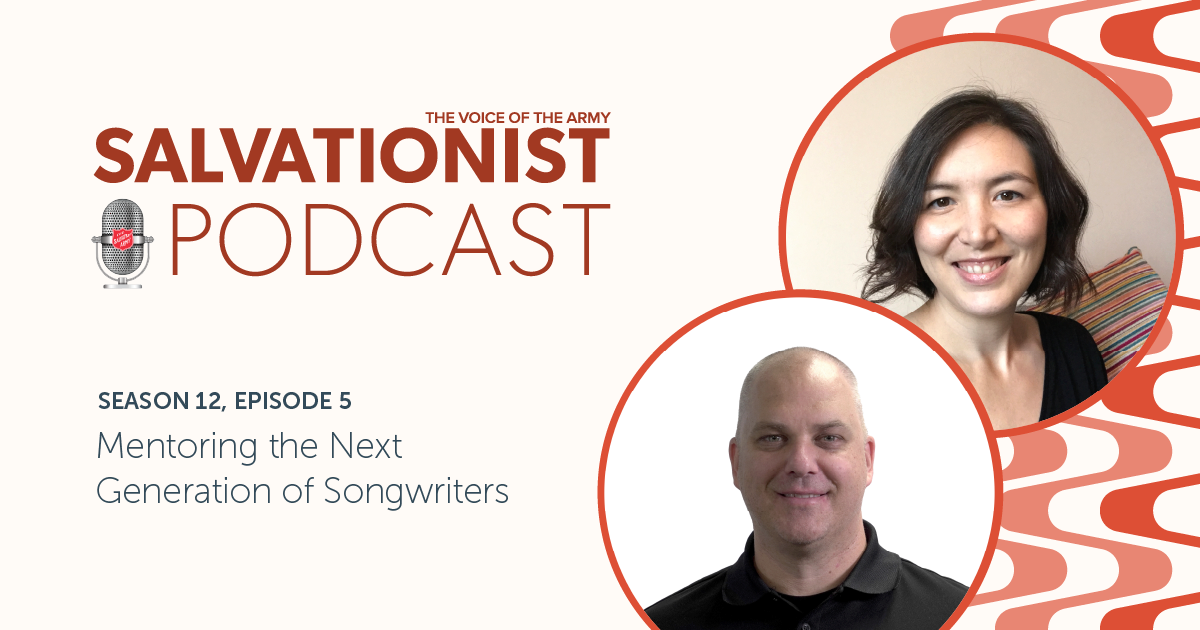 Mythbusters is a TV show that tests the truth behind urban myths and historical legends. The hosts go to great lengths to determine whether the myths have any basis in fact. They particularly like blowing things up, dropping dummies from great heights and crashing cars into various objects. There are a few Salvation Army myths that I would like to bust.
Mythbusters is a TV show that tests the truth behind urban myths and historical legends. The hosts go to great lengths to determine whether the myths have any basis in fact. They particularly like blowing things up, dropping dummies from great heights and crashing cars into various objects. There are a few Salvation Army myths that I would like to bust.
Myth #1: People from the general public will not enter a church building; you have to go to them.
Two years ago God sent to my office a representative from Alcoholics Anonymous who was looking for a room to hold a meeting for his group. At the time, most of the rooms in our church sat empty for most of the week. Although we had the traditional band, songsters, YP band, singing company and home league, these groups occupied only a fraction of the church space and time on the calendar. So our ministry board said yes to the AA group.
The AA group found our facility and church members very user-friendly. They told other groups about us and soon we had another AA group and then another and another. Word spread. Al-anon, the support group for families of alcoholics, came in. Then Gamblers Anonymous. Then Narcotics Anonymous. Then Eating Disorders Anonymous. In between these groups, the Burlington Amateur Radio Club set up camp in our building. This group works with The Salvation Army in times of disaster. A small private school came our way in September, and we are working with a local elementary school to organize an after-school homework club.
In our ministry board, we refer to this as our bridge-building ministry. We don't preach. We don't proselytize. We simply reach out a hand of friendship and support. We place literature around the hall in key areas, and thank God every time we have to replenish the supply. We meet strangers in our building with a smile and a sincere greeting. We are there to address their concerns.
We don't preach. We don't proselytize. We simply reach out a hand of friendship and support
Does it pay off? About four months ago, one AA member died by suicide after experiencing a personal tragedy she could not cope with. The AA members asked me to conduct a memorial service for her. On a Monday evening, about 150 members of AA gathered in our sanctuary to hear me preach the Word of God and share with them the love of Jesus. Their expressions of gratitude were overwhelming. A few have begun to drop in to our Sunday services.
Myth #2: People from the general public are turned off by uniform-wearing Salvationists.
Most of the time when I am around our church building I am wearing some form of Salvation Army uniform, usually a regulation shirt and tie with the words “The Salvation Army” embossed on either my shirt or jacket. The people who hang out behind the church before or after their meetings are usually smoking cigarettes and talking. They eagerly address me as “Major” and have no reservations about stopping to chat with me. To others I am “the Maj.” When they see the uniform they know who I am and they know what I stand for. To them I am the embodiment of the organization that supports them, encourages them and does not judge them.
Myth #3: We cannot identify our churches as Salvation Army.
Our church has a large, colourful Salvation Army crest to the left of our main doors. A light shines on the crest at night. Our main doors, which are glass, are etched with a large Salvation Army shield. To the right of the door there are raised, white letters spelling out the words “The Salvation Army,” again with a light at night. From our flagpole flies the Army flag. There is no mistaking who we are. For this reason people often walk into our building without an appointment, some looking for help, some offering help. The identity does not prevent them from coming. Quite the opposite happens; they come because we are The Salvation Army.
Now that I have thoroughly busted these myths, I have a few dummies to attend to.
Major Fred Ash is corps officer at Burlington Community Church, Ont.









Right on...open our buildings to the whosoever. We done exactly as you have a couple of years ago and it opened a lot more then just the front doors of the citadel, it has opened the doors to peoples hearts.
We have several 'community programs' (which are really ministries, but you can't say that to some or they will think you're pushing Christianity, or even worse, Army) in which people who would never have walked into our building or any other church building for that matter. It has allowed us to build as many if not more relationships with the people of our communities as we do within the Army circles.
The impact we have is often not known until a person dies. We have done 2 funerals and have been involved in numerous others as a final wish of people who are 'not ours' as we often refer to them. And even to this day, the respect for TSA by the families of these people is as strong as it was on the day we started building our relationships with them.
Myth #2 I am thankful for the various ways we can wear the uniform. I believe that while the full uniform is the norm for officers when in public meetings of every kind, I also find that wearing something a little more casual while doing the day to day often drops some of the barriors that may be put up because of what the officer may be perceived to be. I guess in rural settings, it gives the impression (and rightfully so) that Captain is willing to roll up his sleeves and helpwith the dirty jobs.
Myth #3 Our buildings... I agree with you here. There should not be any second guessing in who we are or where we are, and by having an easily identied building it says 'here we are, come on in.' It's one thing to be known in the community as someone who is approachable, but people also need to know where you hang your hat and also know that they are welcome there, and what better way then with a big Crest, Shied or Flag.
Good article sir...I apoligize for my grammer, but you already know me for that don't you.